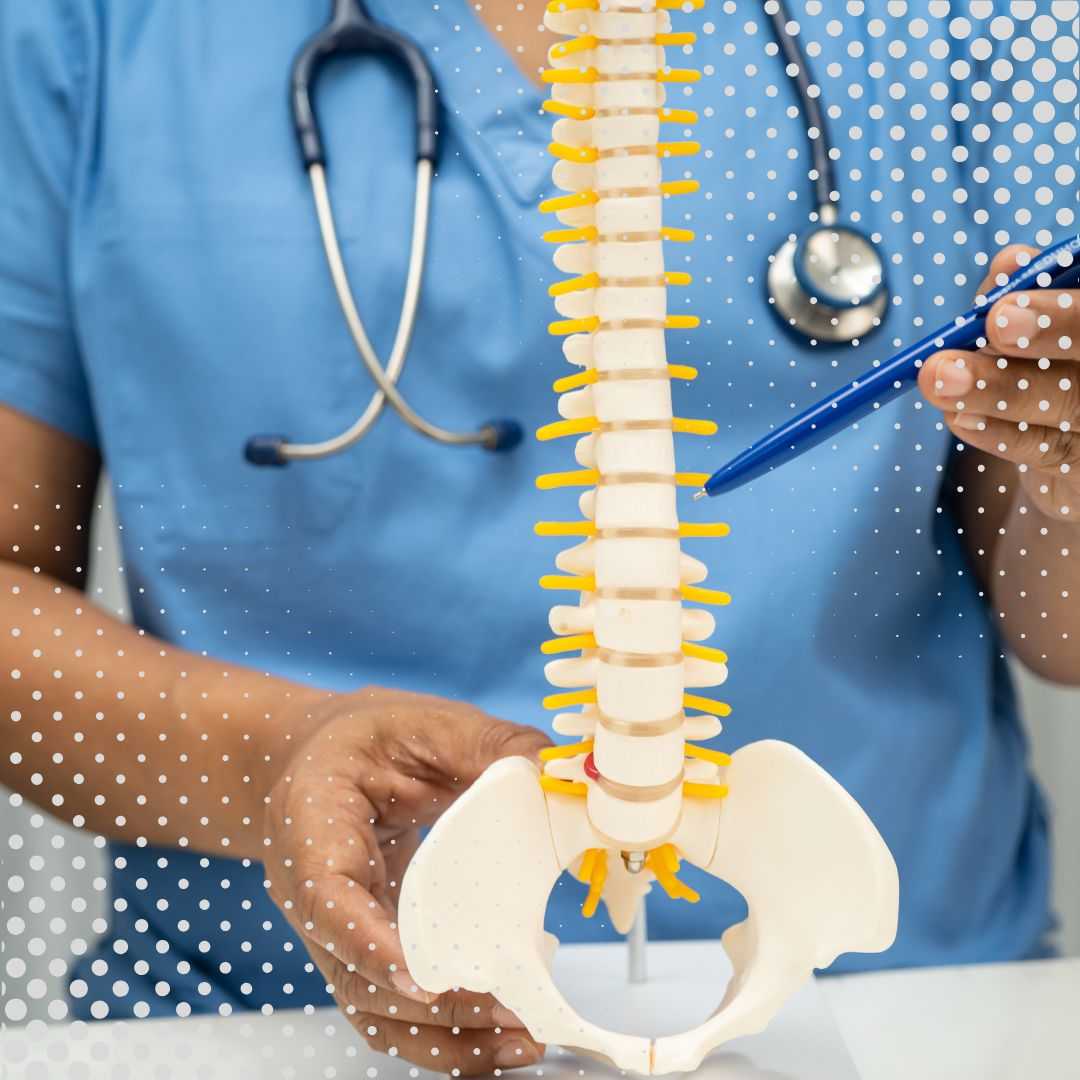.png)
Reclaiming Life After Stroke: Exploring Stem Cell Therapy
A stroke can be a life-altering event, abruptly changing everything in an instant. The sudden loss of brain function can leave individuals with debilitating challenges, from motor weakness and speech difficulties to cognitive impairments and emotional changes. For many, the road to recovery is long, often frustrating, and can feel like a lifelong battle to regain independence.
While traditional rehabilitation plays a crucial role, patients and their families often search for "new treatments for stroke recovery" or "advanced therapies for stroke" that offer further hope. This is where stem cell therapy emerges as a beacon of possibility. Stem cell therapy for stroke is a cutting-edge regenerative approach that aims to repair the brain tissue damaged by a stroke, potentially leading to improved function and a better quality of life.
Imagine a treatment that could help your brain heal itself, promoting the growth of new cells and connections where they were once lost. That's the promise of stem cell therapy. It's not a magic bullet, but a significant step forward in regenerative medicine, offering a chance for patients to experience improvements long after conventional treatments have reached their plateau. This comprehensive guide will delve into what stem cell therapy entails for stroke patients, exploring its mechanisms, benefits, costs, and why many are considering it abroad.
What are the common symptoms of a stroke that indicate the need for treatment?
Identifying the signs of a stroke immediately is critical for minimizing brain damage and improving recovery outcomes. Healthcare professionals often use the acronym F.A.S.T. to help people remember the key symptoms:
- F - Face Drooping: Does one side of the face droop or is it numb? Ask the person to smile. Is the smile uneven?
- A - Arm Weakness: Is one arm weak or numb? Ask the person to raise both arms. Does one arm drift downward?
- S - Speech Difficulty: Is speech slurred, are they unable to speak, or are they hard to understand? Ask the person to repeat a simple sentence. Is the sentence repeated correctly?
- T - Time to call emergency services: If anyone shows any of these symptoms, even if the symptoms go away, call for immediate medical attention.
Other sudden symptoms can include numbness or weakness on one side of the body, confusion, trouble seeing in one or both eyes, trouble walking, dizziness, loss of balance or coordination, or a severe headache with no known cause. These "signs of stroke" are a medical emergency, and prompt treatment is essential. Early intervention can make a significant difference in the extent of recovery and the potential for a better quality of life.
What causes a stroke, and who is at risk?
A stroke happens when the blood supply to part of your brain is interrupted or reduced, depriving brain tissue of oxygen and nutrients. Within minutes, brain cells begin to die. There are two main types of stroke:
- Ischemic Stroke: This is the most common type, accounting for about 87% of all strokes. It occurs when a blood vessel supplying the brain becomes blocked, often by a blood clot. These clots can form in the brain's arteries or travel to the brain from another part of the body.
- Hemorrhagic Stroke: This less common type occurs when a blood vessel in the brain leaks or ruptures, causing blood to spill into the brain tissue. This can be due to high blood pressure, aneurysms, or arteriovenous malformations (AVMs).
Understanding "causes of stroke" also involves knowing the risk factors. Many "stroke risk factors" are modifiable, meaning you can take steps to reduce them:
- High Blood Pressure (Hypertension): The leading cause of stroke.
- Diabetes: High blood sugar can damage blood vessels.
- High Cholesterol: Can contribute to plaque buildup in arteries.
- Smoking: Damages blood vessels and increases clot formation.
- Obesity and Lack of Physical Activity: Contribute to other risk factors.
- Heart Disease: Conditions like atrial fibrillation (irregular heartbeat) can lead to clots.
- Family History of Stroke: Genetic predisposition.
- Age: Risk increases with age, though strokes can occur at any age.
Managing these risk factors through lifestyle changes and medical treatment is crucial for preventing a stroke.
How does stem cell therapy work for stroke recovery?
Stem cell therapy represents a paradigm shift in thinking about "how stem cell therapy works for stroke." Instead of merely managing symptoms, it aims to address the root cause of neurological deficit – damaged brain tissue. Here's a simplified breakdown of the proposed mechanisms:
- Neuroprotection: Stem cells can release growth factors and anti-inflammatory molecules that protect existing brain cells from further damage and create a more favorable environment for healing.
- Neurogenesis & Angiogenesis: Stem cells have the potential to differentiate into new neurons (neurogenesis) and glial cells, which are crucial for brain function. They can also stimulate the formation of new blood vessels (angiogenesis), improving blood flow to the affected areas, akin to "stem cells for brain repair."
- Immunomodulation: Stem cells, particularly Mesenchymal Stem Cells (MSCs), possess powerful immunomodulatory properties. They can reduce the inflammatory response that often exacerbates brain damage after a stroke, calming the brain's healing environment.
- Neural Network Remodeling: By releasing various factors, stem cells can encourage the brain to reorganize and form new connections (synaptogenesis), essentially creating new pathways to bypass damaged areas and restore function.
The type of stem cells used can vary, including autologous (from the patient's own body) or allogeneic (from a donor) cells, often mesenchymal stem cells (MSCs) derived from bone marrow or adipose tissue due to their safety profile and regenerative capabilities. The goal of this "regenerative treatment for stroke" is to harness the body's natural healing potential to restore lost neurological function and improve quality of life.
Am I a candidate for stem cell therapy after a stroke?
Determining "am I a candidate for stem cell therapy after a stroke?" is a crucial step and requires a comprehensive evaluation by a medical team specializing in both stroke and regenerative medicine. While specific criteria can vary between clinics and ongoing clinical trials, general guidelines often include:
- Time Since Stroke: Many treatments target the chronic phase (typically 6 months or more after the stroke), where spontaneous recovery has plateaued. However, some trials explore acute or subacute phases.
- Type of Stroke: While stem cell therapy is being explored for both ischemic and hemorrhagic strokes, the optimal timing and approach might differ.
- Neurological Deficits: Patients who still experience significant impairments in motor function, speech, or cognition despite traditional rehabilitation are often considered. The severity and specific nature of these deficits are important.
- Overall Health: Candidates should be in generally good health, free from active infections, uncontrolled chronic diseases, or cancers, which could complicate the procedure or recovery.
- Previous Treatments: A history of conventional stroke rehabilitation is often expected.
- Realistic Expectations: Patients must understand that stem cell therapy is not a guaranteed cure but a potential avenue for improvement, often requiring continued rehabilitation.
If you're wondering "who can get stem cell therapy for stroke," it's vital to provide your full medical history, imaging scans (MRI/CT), and a detailed account of your current neurological status to the specialist clinic. They will assess your "stroke patient criteria" and advise on the suitability of the treatment for your specific situation.
What is the recovery time and what can I expect after stem cell treatment for stroke?
Understanding "stem cell therapy stroke recovery time" is important for setting realistic expectations. Unlike a sudden fix, the effects of stem cell therapy for stroke are typically gradual and cumulative. Here's what patients can generally expect:
- Immediate Post-Procedure: You might experience mild discomfort at the injection site (if applicable) or some fatigue. Most procedures are minimally invasive, allowing for relatively quick discharge.
- Short-Term (Weeks): Some patients report initial changes, such as improved energy levels or subtle sensory shifts. The stem cells begin their work, influencing the brain's environment and initiating repair processes.
- Long-Term (Months): This is when more noticeable functional improvements are often observed. Patients, often in conjunction with continued physical, occupational, and speech therapy, may see gains in motor control, balance, coordination, speech clarity, or cognitive function. The brain needs time to remodel and form new connections.
It’s crucial to understand that stem cell therapy is not a standalone treatment but often works synergistically with rehabilitation. Ongoing therapy helps the brain learn to use the newly repaired or stimulated pathways effectively. Patience and consistent effort in rehabilitation are key to maximizing "post-stroke stem cell expectations." Improvements can continue for several months, sometimes even up to a year or more, as the brain adapts and heals.
What are the potential risks and side effects of stem cell therapy for stroke?
While stem cell therapy holds significant promise, like any medical procedure, it carries potential "stem cell therapy risks for stroke" and side effects. However, when conducted by experienced professionals in reputable clinics, the risks are generally considered low, especially with the use of adult mesenchymal stem cells (MSCs).
Potential risks and side effects can include:
- Injection Site Issues: For procedures involving injections (e.g., intravenous or intrathecal), there might be temporary pain, bruising, swelling, or minor bleeding at the site.
- Infection: Any procedure that breaks the skin carries a minimal risk of infection, which is why sterile techniques are paramount.
- Immune Reaction: If allogeneic (donor) cells are used, there's a slight risk of an immune response, although MSCs are known for their immunomodulatory properties, which often makes them well-tolerated.
- Fever or Flu-like Symptoms: Some patients might experience temporary mild fever or fatigue post-procedure.
- Tumor Formation: This is a highly publicized but extremely rare concern, primarily associated with embryonic stem cells or induced pluripotent stem cells (iPSCs) if not properly differentiated. With adult MSCs, especially those derived from bone marrow or adipose tissue, the risk is considered negligible in clinical practice.
- No Efficacy: It's possible that the treatment might not yield the desired improvements for every patient.
When considering "is stem cell therapy safe for stroke," it's crucial to choose clinics that adhere to strict safety protocols, ethical guidelines, and have a proven track record. Always discuss all potential "side effects of stem cells in the brain" and your individual health profile with your chosen medical team.
How much does stem cell therapy for stroke cost worldwide?
The "stem cell therapy cost for stroke" is a significant factor for many patients, and it can vary widely based on several factors, including the country, the reputation of the clinic, the type of stem cells used, the number of treatment sessions required, and whether adjunctive therapies are included. Here's a general comparison to give you an idea:
Worldwide Stem Cell Therapy for Stroke Cost Comparison (Estimated)
| Country | Estimated Cost Range (USD) | Key Considerations |
|---|---|---|
| USA / Canada | $20,000 - $50,000+ | Often higher due to strict regulations (many treatments are still in clinical trials), advanced facilities, and high healthcare costs. Limited options outside of trials. |
| Germany | $15,000 - $35,000+ | Known for high medical standards and advanced research. Costs can be high but often include comprehensive care. |
| Mexico | $7,000 - $25,000 | A popular medical tourism destination offering more affordable rates without compromising on quality in reputable clinics. Proximity for North Americans. |
| India | $7,000 - $20,000 | Emerging as a hub for medical tourism with competitive pricing and growing expertise in regenerative medicine. |
| Thailand | $8,000 - $25,000 | Offers high-quality medical facilities and excellent patient care at lower costs, combined with a vibrant tourism experience. |
These figures are estimates and can fluctuate. It's essential to get a personalized quote that details all inclusions (e.g., consultations, specific cell types, number of infusions, follow-up care) when comparing "cost of stroke treatment abroad." Many patients find "affordable stem cell stroke therapy" in countries where healthcare costs are generally lower while maintaining high standards of care.
Why should I consider traveling abroad for stem cell therapy for stroke?
The decision to seek "stem cell therapy abroad for stroke" is a personal one, but it's increasingly becoming a viable option for many patients. Here are several compelling reasons why individuals consider medical tourism for this procedure:
- Access to Advanced Treatments: In some countries, specific stem cell protocols or types of stem cells for stroke may be more readily available or have broader approval for use outside of clinical trials than in a patient's home country. This can mean access to cutting-edge therapies sooner.
- Cost-Effectiveness: As seen in the cost comparison, the "benefits of overseas stroke therapy" often include significantly lower treatment costs compared to Western countries like the USA, without compromising on quality of care in accredited facilities. This can make life-changing treatment more accessible.
- Reduced Waiting Times: In many healthcare systems, patients face long waiting lists for specialized treatments. Traveling abroad can often mean faster access to consultations and treatment, allowing for quicker intervention.
- Integrated Care and Holistic Approach: Many international clinics offer comprehensive packages that include not only the stem cell therapy but also pre-treatment assessments, post-treatment rehabilitation, nutritional guidance, and accommodation, providing a more holistic healing environment.
- Privacy and Anonymity: For some, seeking treatment away from home offers a level of privacy they might not find domestically.
- Expertise and Specialization: Certain clinics and doctors abroad have developed particular expertise in regenerative medicine for neurological conditions like stroke, attracting patients from around the globe for their specialized knowledge and experience.
These factors make "medical tourism for stroke treatment" an attractive pathway for those looking to expand their options and pursue potentially life-improving therapies.
Which countries are renowned for offering stem cell therapy for stroke?
When searching for "where to get stem cell therapy for stroke," several countries have emerged as leading destinations due to their combination of advanced medical infrastructure, experienced specialists, and favorable regulatory environments for regenerative medicine. These destinations often represent the "best countries for stem cell therapy for stroke":
- Mexico: A top choice for North Americans due to its proximity and a growing number of reputable clinics offering advanced stem cell treatments for neurological conditions. Cities like Tijuana, Cancun, and Guadalajara host facilities known for quality care and competitive pricing.
- Germany: Renowned for its stringent medical standards, advanced research, and highly skilled physicians. While generally more expensive, German clinics offer cutting-edge therapies and often have comprehensive rehabilitation programs.
- Thailand: A major player in medical tourism, Thailand offers world-class hospitals with state-of-the-art technology and highly trained medical staff. Coupled with its attractive tourist destinations, it provides an excellent environment for recovery.
- India: Rapidly gaining recognition for its medical tourism industry, particularly in regenerative medicine. India offers high-quality healthcare at significantly lower costs, with many English-speaking doctors and internationally accredited hospitals.
- Other Emerging Destinations: Countries like Costa Rica, Panama, and South Korea are also developing their capabilities in stem cell research and therapy, offering additional options for patients.
Choosing among these "top clinics for stroke abroad" requires careful research into specific clinic accreditations, physician qualifications, patient testimonials, and treatment protocols to ensure alignment with your needs and expectations.
How can I ensure the safety and quality of stem cell therapy abroad?
Ensuring the "safe stem cell therapy abroad" and high quality of treatment is paramount when considering medical travel. Here are key steps and considerations to help you make an informed decision:
- Research Clinic Accreditations: Look for international accreditations such as Joint Commission International (JCI), which signifies adherence to global healthcare standards. Check local regulatory bodies and licenses as well.
- Verify Physician Credentials: Ensure the doctors performing the procedure are board-certified specialists with extensive experience in neurology and regenerative medicine. Look for their educational background, professional affiliations, and publications.
- Understand the Treatment Protocol: A reputable clinic will provide clear, detailed information about the type of stem cells used (e.g., autologous MSCs), their source, processing methods, administration route, and the expected number of treatments. Avoid clinics that promise instant "cures" or lack transparency.
- Review Patient Testimonials and Outcomes: Seek out genuine patient stories, testimonials, and if possible, connect with former patients. While individual results vary, a pattern of positive experiences indicates quality care.
- Ask About Safety Protocols: Inquire about their infection control, adverse event reporting, and emergency procedures.
- Consider a Medical Tourism Facilitator: Companies like PlacidWay specialize in connecting patients with accredited international clinics. They can help with vetting facilities, understanding treatment options, logistical arrangements, and providing an extra layer of support for "quality stroke treatment overseas."
- Transparent Communication: The clinic should be responsive to your questions, provide clear pricing, and ensure you understand all aspects of the treatment plan, including potential risks and realistic outcomes.
By taking these steps, you can significantly enhance your chances of finding a high-quality, safe, and effective stem cell therapy experience abroad.
Take the Next Step with PlacidWay
Ready to explore treatment options abroad? Discover top clinics, compare prices, and get a free quote tailored to your needs with PlacidWay.
Stem Cell Therapy Abroad










Share this listing